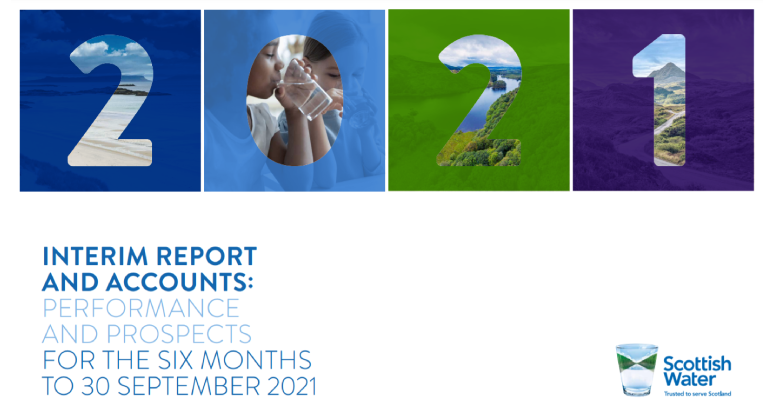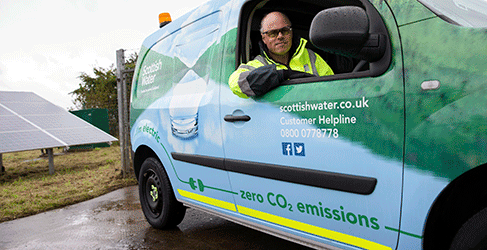Extreme Weather Led to ‘Extraordinary’ Period for Scottish Water, New Report Reveals
20 January 2022
Interim Report and Accounts
Performance and Prospects for the six months to 30th September 2021
Extreme weather conditions led to one of the “most challenging and extraordinary periods” for Scotland’s water and wastewater provider.
Scottish Water said the record-breaking hot and dry weather last summer along with severe storms has placed its assets and employees under huge pressure – and warned that climate change will make such conditions more frequent.
In its interim Performance and Prospects report covering the six-month period from April to September 2021 published today (Tuesday) the organisation highlights how major investment is needed to transform the way it operates to ensure its customers continue to receive the standard of service they expect from the utility.
Scottish Water said the record-breaking hot and dry weather last summer along with severe storms has placed its assets and employees under huge pressure – and warned that climate change will make such conditions more frequent.
In its interim Performance and Prospects report covering the six-month period from April to September 2021 published today (Tuesday) the organisation highlights how major investment is needed to transform the way it operates to ensure its customers continue to receive the standard of service they expect from the utility.
Interim Performance and Prospects Report
Read our interim Performance and Prospects report here
Click here
Douglas Millican, Scottish Water Chief Executive, said: “With my 25 years of experience in the water sector, I can honestly say the last few months have been truly extraordinary. While Covid-19 dominated our lives last year, and we’re clearly still living with the impact of the pandemic, the dominant issue of the last six months for us has been the weather.
“It was a period of record-breaking extremes that severely tested our assets, networks and teams across the country and has had an inevitable impact on our customers and the environment.”
The report reveals slightly higher leakage levels resulting from the impact of freezing conditions early in 2021 and the record dry summer, and how intense storms in the summer caused localised customer flooding and pollution events.
It also highlights how extended dry and record-breaking hot weather led to significant increases in water consumption, low water resource levels and issues in some areas with drinking water quality.
Mr Millican said: “We need to invest more – and more quickly – to replace our ageing infrastructure and make our assets more resilient to our changing climate
“We are already developing plans to address these impacts for both water and wastewater services so we can continue to deliver high service levels to our customers. This has led to an increased need for investment, with managing flood risk to our customers one of the most substantial of these.”
“It was a period of record-breaking extremes that severely tested our assets, networks and teams across the country and has had an inevitable impact on our customers and the environment.”
The report reveals slightly higher leakage levels resulting from the impact of freezing conditions early in 2021 and the record dry summer, and how intense storms in the summer caused localised customer flooding and pollution events.
It also highlights how extended dry and record-breaking hot weather led to significant increases in water consumption, low water resource levels and issues in some areas with drinking water quality.
Mr Millican said: “We need to invest more – and more quickly – to replace our ageing infrastructure and make our assets more resilient to our changing climate
“We are already developing plans to address these impacts for both water and wastewater services so we can continue to deliver high service levels to our customers. This has led to an increased need for investment, with managing flood risk to our customers one of the most substantial of these.”


The report underlines how Scottish Water will tackle wastewater challenges with smart networks and real-time monitoring of assets key to reducing the impact of sewer blockages. It highlights the impact Storm Arwen had on the utility in November when hundreds of customers had no water supply for four days due to the extensive damage caused to the environment and to power supplies.“We have a bold ambition to transform what we do to provide water and wastewater services in a way that makes the broadest possible contribution to the life and wellbeing of people, businesses, communities and the environment across Scotland.”
Douglas Millican
Chief Executive, Scottish Water
There will also be investment in new ways to keep surface water from entering the sewer network, including using environmental features such as redesigned open spaces to hold more water in times of heavy rain and allow it to dissipate more slowly.
In terms of drinking water, Scottish Water says it will increase the resilience of its assets to support increased demand for water in prolonged hot weather.
The report highlights how in parts of the country demand for water during hot weather in July increased by 40 per cent – around one million litres extra per day compared to normal levels for that time of year.
There will also be further investment in treatment processes – to prevent elevated levels of naturally-occurring substances like manganese entering the network as happened in Lanarkshire last summer, leading to discoloured water for many customers.
Mr Millican added: “We have a bold ambition to transform what we do to provide water and wastewater services in a way that makes the broadest possible contribution to the life and wellbeing of people, businesses, communities and the environment across Scotland. Transforming how we deliver to achieve service excellence and go beyond net zero emissions while providing great value for our customers.
“We are seeing shifts in the expectations of customers, communities and stakeholders that will require their continued support and time to fulfil. In some instances, this will mean the help of communities, including reducing their water consumption or working with us to protect our water environment. It will also require their support for increased levels of investment and the impact this will have on customer charges.”
His report also highlighted the progress being made by Scottish Water on its plan to achieve net zero emissions by 2040. In the year to September, the first anniversary of the launch of its Net Zero Routemap, the utility had reduced its operational greenhouse gas emissions by a further 2%, installed 1GWh of solar energy, restored 45 hectares of peatland and established a framework to make low carbon solutions central to its investment decision-making.
Scottish Water employs around 4,000 staff. Every day it delivers an average 1.53 billion litres of fresh drinking water to its customers and removes 1.08 billion litres of wastewater which it treats, recovers resources from and returns safely to the environment. It estimates it needs to double its investment in the next 20 years to replace ageing assets and tackle climate change impacts.









